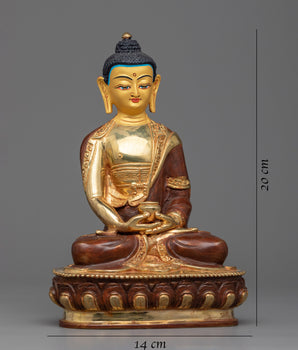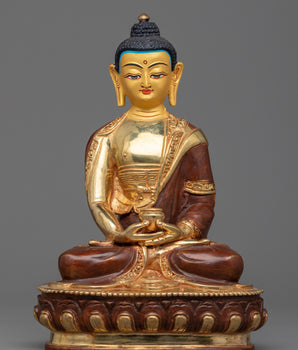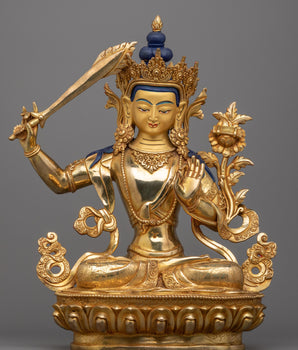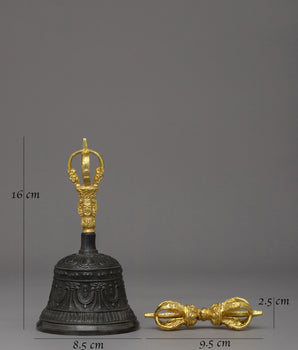











24K Gold Gilded Gampopa Statue | Tibetan Copper Work of Art for Spiritual Practice

100% AUTHENTIC

HANDMADE

FREE SHIPPING
24K Gold Gilded Gampopa Statue | Copper Work of Art for Spiritual Practice
------------------------------------------------------------
Size: 8.5”/21.5cm (Height) x 6.7”/17cm (Base)
Weight: 1.59 kg
Material: 24K Gold Gilded, Gold & Acrylic Paintings, Copper Body
------------------------------------------------------------
About our Statue:
This 8.5-inch 24K gold-gilded Gampopa Statue, Milarepa's heart disciple and an essential figure in the Kagyu lineage, is a masterpiece of traditional Himalayan art. This sculpture, cast in copper and carefully plated with 24K gold, embodies the profound devotion and beauty of Tibetan Buddhist sacred art. The hand-painted face features and intricately carved robes represent Gampopa's serenity, clarity, and realization.
Gampopa sits in quiet meditation on a double-layered cushion, holding a vase of longevity, which symbolizes knowledge and spiritual nutrition. His noble demeanor and distinctive hat reflect his monastic pedigree and the transmission of profound Mahamudra teachings. The detailing is perfect, conveying the element of spiritual refinement that has been handed down through the centuries.
This sculpture is great for Kagyu practitioners or anybody setting up a home altar to promote clarity, discipline, and enlightenment.
Gampopa, also known as Takpo Lhaje, was a prominent Tibetan Buddhist master and the key figure in establishing the Kagyu school. A disciple of Milarepa, he integrated the Kadampa teachings with Mahamudra, laying the foundation for the Kagyu tradition. His teachings emphasized the importance of meditation, wisdom, and compassion on the path to enlightenment.
Introduction to the Buddhist Master
Gampopa received teachings from various masters across multiple lineages, including the Nyingma and Kadampa traditions. He became the foremost disciple of the renowned yogi Milarepa at the age of thirty, receiving instruction in Vajravarahi, Tummo, and Mahamudra from him, and was clothed in the master's traditional Tibetan attire. Ashtamangala is used to carve the throne (The ight auspicious symbols).
How do you take care of your statues?
• Place them at room temperature, avoiding direct sunlight.
• Make sure that the area where your statue is placed is entirely free of moisture and dust.
• Place it at the highest place on your altar after being consecrated by a Lama/monks. The best practice is to keep them covered inside a glass cabinet.
• Do not use your bare hands or any objects with a rough surface to wipe the face. Directly touching objects with the bare hand can smudge the face, leaving scratches.






















